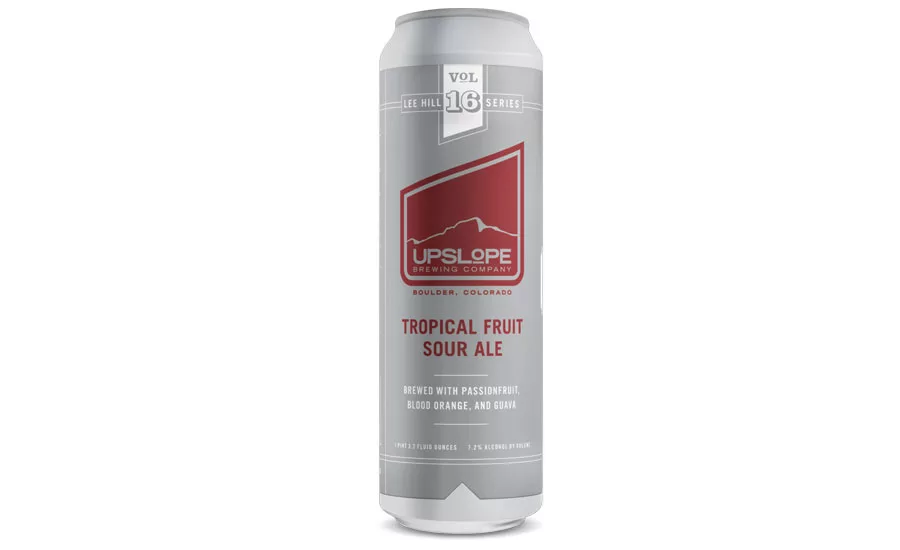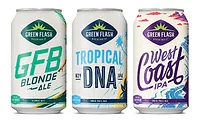2019 Beer Report: Emerging styles, flavors help craft beer
Packaging innovations also benefit beer segment

In the trailer leading up the Season 17 premiere of Bravo TV’s “Project Runway,” host Karlie Kloss details how the fashion industry has changed and the new season will reflect that evolution. Just as styles have evolved over the past 20 years in fashion, so have the styles in the craft beer market.
“New beer styles are becoming popular largely due to younger consumers’ interest in diversifying their beverage consumption,” says Chris Lombardo, lead industry analyst for Los Angeles-based IBISWorld. “This provides brand owners with the opportunity to try new and differing styles of beers without as much of a risk alienating their key markets as in the past.”
Among the styles that are experiencing measureable growth are sour beers. Patrick Livingston, director of client insights for beer, wine and spirits for Chicago-based Information Resources Inc. (IRI), notes that the beer style’s sales are up nearly 40 percent.
“I think that craft brewers are looking to introduce new styles to continue to keep the segment fresh for the marketplace,” he says. “Craft beer consumers are interested in choice and a unique taste portfolio that will allow them to experience new beers and share that experience with their friends.
“I think the idea of sour growing is largely because sour is very well differentiated from the other craft beer styles in terms of its taste profile,” Livingston continues. “Thus, it helps add to the craft beer drinker’s portfolio, if you will, and allow them to have more taste experiences as they are trying new craft beers and new styles.”
(Brand family)
| DOLLAR SALES | % CHANGE VS. PRIOR YEAR | CASE SALES | % CHANGE VS. PRIOR YEAR | |
| Blue Moon | $334,297,713 | -1.9 | 9,907,721 | -3.4 |
| Samuel Adams | $256,654,585 | -7.2 | 7,607,906 | -8.1 |
| Sierra Nevada | $252,064,642 | 3.2 | 7,171,843 | 1.2 |
| New Belgium | $201,593,640 | -3.3 | 5,521,410 | -7.9 |
| Lagunitas | $182,753,832 | 0.7 | 4,748,144 | 1.6 |
| Leinenkugel Specialty | $151,680,816 | -16 | 4,791,078 | -16.9 |
| Shiner | $132,941,774 | -2.6 | 3,969,444 | -3 |
| Founders | $108,183,412 | 32.4 | 3,387,061 | 37.8 |
| Shock Top | $92,058,148 | -17.2 | 3,147,277 | -13.8 |
| Stone | $92,058,148 | 16.9 | 1,753,380 | 10.8 |
| Total sales* | $4,209,673,166 | 2.5 | 111,921,039 | 1.2 |
*Includes brands not listed.
Source: Information Resources Inc. (IRI), Chicago. Total U.S. supermarkets, drug stores, gas and convenience stores, mass merchandisers, military commissaries, and select club and dollar retail chains for the 52 weeks ending Dec. 30, 2018.
Livingston adds that style innovation is a key component to success of the craft beer segment. For example, he calls attention to craft brewers that have developed hazy IPAs, a lighter version of the traditional IPA; lagers; and brewing with coffee ingredients.
Brian Sudano, managing partner for New York-based Beverage Marketing Corporation (BMC), echoes similar sentiments about the opportunities that beer style differentiation can offer to craft brewers.
“As craft brewers try to penetrate mainstream consumers that seek easier-to-drink beers, other styles will become more prevalent to include sours and lagers,” he says. “[They] broaden the consumer base by attracting beer consumers that reject more complex beer styles and therefore do not participate in the craft category.”
In its October 2018 report titled “Beer and Craft Beer – US,” Chicago-based Mintel details the importance of “style” when beer consumers are selecting products.
“Style is the second most important factor influencing beer choice, and ‘better selection of styles’ is the leading reason driving increased consumption among those who have increased their consumption in the past year,” the report states. “Open-end responses included in our custom consumer survey indicate consumers may feel increasingly knowledgeable about beer and, thus, are growing more comfortable in the category. Engaged beer drinkers (including younger consumers and craft drinkers) place a significantly higher-than-average level of importance on style, suggesting that messaging that gets specific about the beer style and its components’ impact on the flavor and drinking experience may find appeal.”
Although varying styles can offer more opportunities for craft beer, the top style remains IPAs, which account for a 31.5 percent share of the craft beer segment, IRI’s Livingston says. Additionally, sales of the beer were up 12.5 percent, he notes.
Like any emerging beverage segment, craft beer caught the attention of larger players that sought to realize the benefits. “While the number of craft breweries continues to expand at substantial rates, many older players in the segment are being acquired by global breweries,” IBISWorld’s Lombardo says. “For instance, Magic Hat Brewing Co., Ballast Point Brewing Co. and Lagunitas Brewing Co. were once considered significant players in the segment. Now, these breweries are owned by major beer brands and are no longer classified as craft breweries.”
Although some craft brewers have joined forces with global brewers, local craft breweries remain in vogue to help fill consumers’ thirst for new beers and styles.
“We also see there is continued growth in smaller craft brewers,” IRI’s Livingston says. “I believe that there is a large local piece to that, meaning that the smaller craft brewers tend to cater to a local market. They are very strong. Any craft beer looking to expand to a broader distribution faces the fact that they will be launching their product in new markets that are not local home turf and therefore they tend to have difficulty in maintaining high sales rates and velocities as they expand into new markets. I think that is why smaller craft brewers are doing well. Because it’s a little bit easier to maintain higher sales rates and velocity on your home turf.” BI
Looking for a reprint of this article?
From high-res PDFs to custom plaques, order your copy today!






